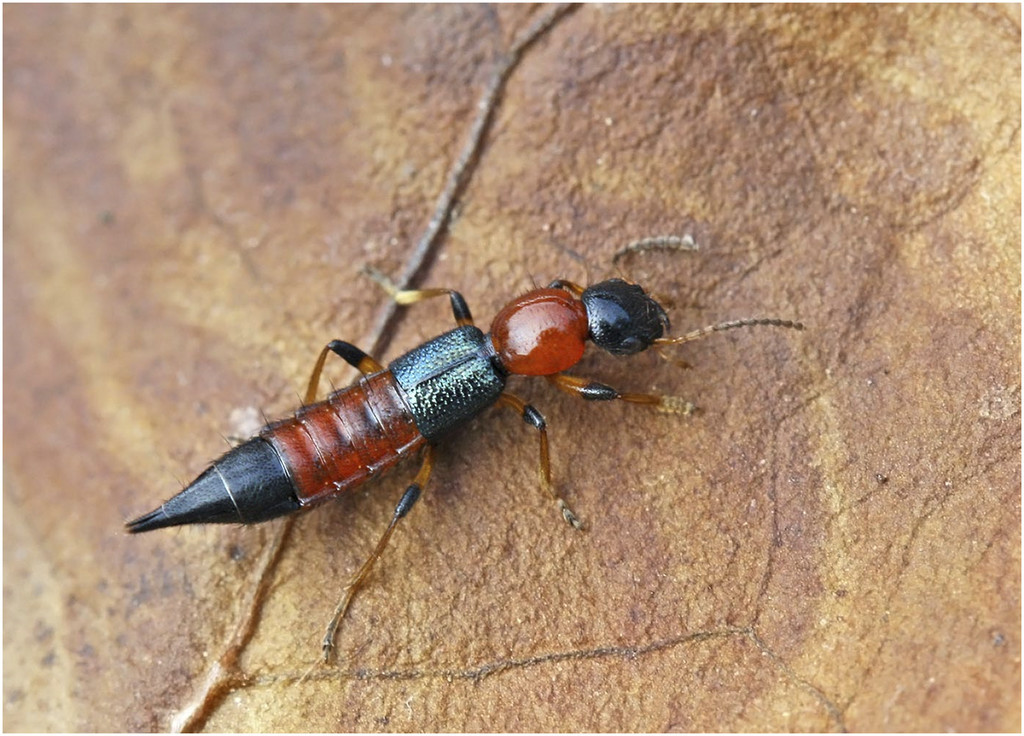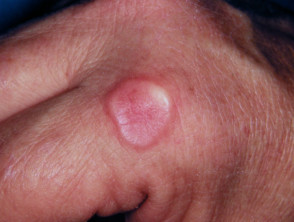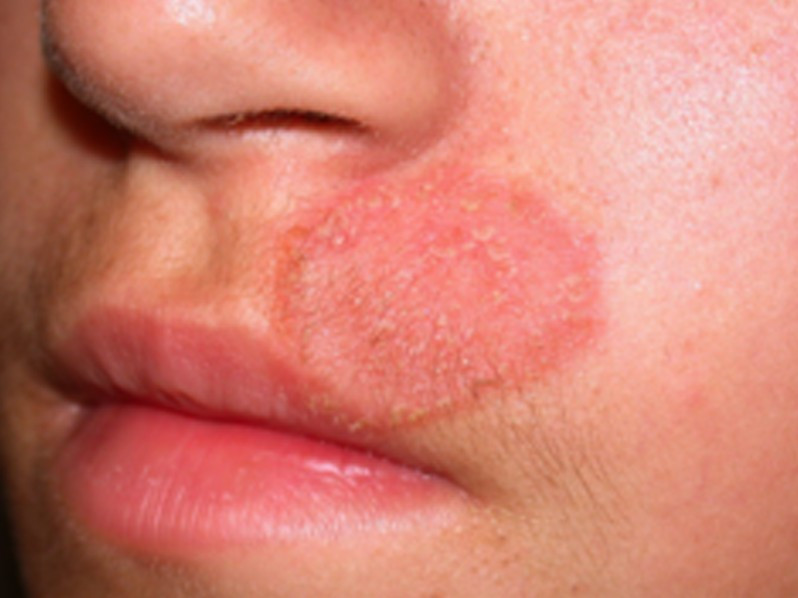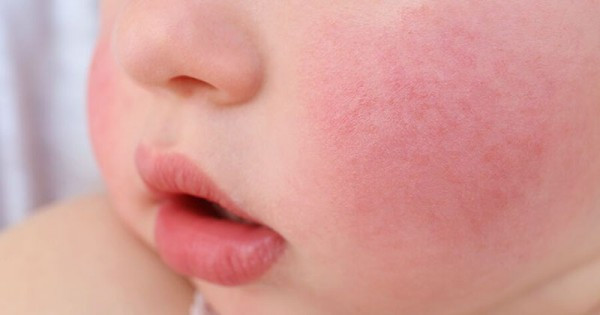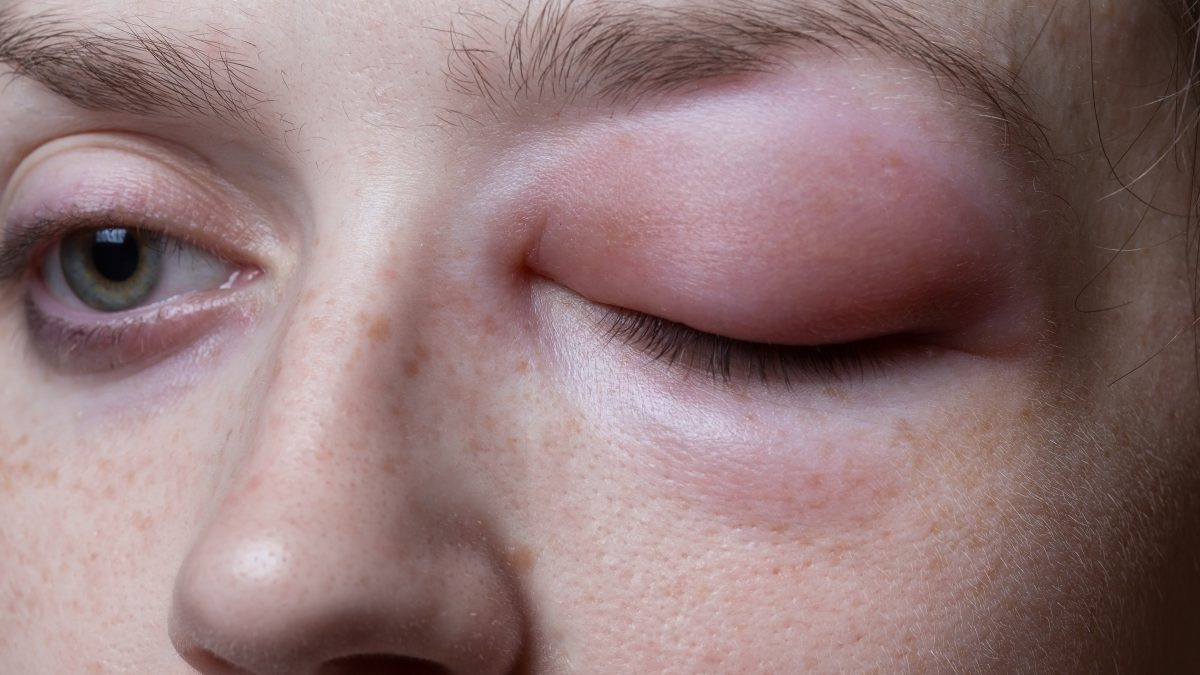Definisi
Dermatitis venenata merupakan reaksi peradangan yang terjadi pada kulit akibat berkontak dengan cairan atau bagian tubuh serangga. Serangga yang paling sering menyebabkan dermatitis venenata adalah kumbang Paederus fuscipes, yang dikenal dengan sebutan tomcat, karena mirip dengan pesawat temput Amerika Serikat dengan nama yang sama. Selain dermatitis venenata, kondisi ini dinamakan sebagai dermatitis paederus (karena penyebab terseringnya merupakan kumbang Paederus) dan dermatitis linearis (karena luka yang dihasilkan pada umumnya berbentuk garis). Dermatitis venenata termasuk dalam kelompok besar dermatitis kontak, yaitu peradangan pada kulit yang terjadi akibat kontak dengan suatu benda atau zat. Dalam hal ini, dermatitis terjadi akibat kontak dengan zat yang dihasilkan oleh serangga.
Penyebab
Dermatitis venenata disebabkan oleh senyawa pederin yang dihasilkan oleh kumbang Paederus. Senyawa pederin merupakan asam lemah dan ditemukan pada seluruh fase kehidupan maupun seluruh bagian tubuh kumbang, kecuali sayap. Senyawa ini hanya dihasilkan oleh kumbang betina, dan memiliki efek antibakteri lemah, namun sangat mampu meracuni sel-sel manusia. Pederin lebih beracun daripada racun laba-laba black widow, yang racunnya diketahui 15 kali lebih kuat daripada bisa ular kobra. Bahkan, senyawa ini tidak rusak apabila dididihkan dengan air panas. Kekuatan racun pederin dapat bertahan hingga 10 bulan dan kumbang Paederus yang dikeringkan tetap beracun hingga 8 tahun.
Biasanya, senyawa pederin berkontak dengan kulit akibat refleks menekan serangga ketika menyentuh kulit. Senyawa ini dikeluarkan oleh hemolimfe kumbang (semacam darah pada manusia) yang keluar saat serangga ditekan. Pederin menyebabkan kerusakan pada DNA (deoxyribonucleic acid, asam deoksiribonukleat) yang ada pada sel. Selanjutnya, kerusakan DNA menyebabkan kematian sel-sel kulit. Namun, kematian sel kulit ini terutama terjadi pada lapisan terluar kulit saja.
Faktor Risiko
Dermatitis venenata ditemukan di seluruh dunia kecuali Antartika, dan ditemukan terutama pada daerah tropis dan subtropis. Biasanya, wabah terjadi pada daerah selatan Eropa dan Asia, dan di belahan dunia lainnya terutama pada dataran rendah. Dermatitis venenata dapat menyerang kapan saja, namun wabah biasanya terjadi pada saat musim hujan. Penyebaran serangga Paederus pada umumnya terjadi pada musim panen, karena pada saat itu jumlah makanannya menurun. Kumbang ini merupakan pemangsa hama seperti serangga lainnya, ngengat, berudu, dan cacing, sehingga ketika jumlah hama berkurang, kumbang ini akan berpindah ke daerah penduduk.
Kumbang ini memiliki sifat fototaksis atau mendekati cahaya, terutama cahaya ultraviolet dan cahaya berwarna putih. Biasanya, kumbang ini dapat ditemukan berkumpul di dekat sumber cahaya seperti lampu pada malam hari di daerah dengan banyak kayu atau daerah perkotaan. Oleh karena itu, biasanya manusia terpapar serangga ini pada malam hari.
Gejala
Dermatitis venenata dapat terjadi pada semua orang. Pasien seringkali tidak sadar berkontak dengan serangga, karena kontak tersebut terjadi saat pasien tidur disertai refleks menekan serangga. Luka biasanya disadari pada pagi hari. Namun, luka ini tidak terjadi secara langsung; ada periode laten yang merupakan waktu antara paparan pederin dengan munculnya luka. Biasanya, luka muncul dalam 24-48 jam setelah kontak dengan serangga.
Luka awalnya berupa kemerahan yang berbentuk seperti garis (railroad pattern, rel kereta api), yang terjadi akibat menekan serangga dan gerakan “mengolesi” bagian kulit sekitarnya dengan racun tersebut. Selanjutnya, dapat muncul lenting-lenting, kerak kulit, serta pengelupasan kulit. Luka yang berupa kemerahan saja dapat hilang setelah 2 hari, namun apabila sampai terjadi lenting, kerak, dan pengelupasan pada kulit, luka biasanya membutuhkan waktu 7-8 hari. Bekas luka biasanya berupa garis yang berwarna lebih gelap daripada kulit, yang hilang dalam waktu 1 bulan. Pada kasus berat, dapat terjadi demam, nyeri sendi, nyeri saraf, pilek, dan peradangan pada gendang telinga.
Selain itu, dapat pula terjadi kissing lesion, yang terjadi akibat pertemuan satu bagian tubuh dengan bagian tubuh lainnya. Kelainan kulit ini misalnya dapat terjadi pada lengan atas dan bawah karena saat tidur, dua bagian lengan tersebut saling bersentuhan. Bentuk luka lainnya dapat berupa plak kemerahan disertai dengan pengikisan pada kulit.
Pederin dapat berpindah melalui seprai atau baju, sehingga dapat menyerang beberapa bagian tubuh secara bersamaan. Bagian tubuh yang paling sering diserang adalah wajah, leher, dan lengan.
Diagnosis
Diagnosis dermatitis venenata dapat ditegakkan dengan mempertimbangkan riwayat penyakit dan bentuk luka. Riwayat yang diperlukan untuk mencapai diagnosis dermatitis venenata adalah adanya luka pada kulit yang disertai dengan sensasi gatal dan terbakar dan adanya riwayat kontak dengan kumbang Paederus, atau pasien berasal dari daerah endemik (daerah dengan kasus serupa banyak). Kelainan kulit yang muncul juga memiliki tampilan yang khas.
Tata Laksana
Dermatitis venenata pada umumnya dapat sembuh sendiri. Jika dermatitis ini ditata laksana, tata laksananya mirip dengan dermatitis kontak lainnya. Jika pasien baru saja berkontak dengan serangga, dapat dilakukan tata laksana dengan cara sebagai berikut:
- Daerah yang terkena dibersihkan dengan sabun dan air
- Antiseptik tincture iodine yang dioleskan dapat menetralkan pederin
- Pemberian obat pereda gatal
Terapi ini dapat dilakukan untuk menurunkan keparahan dan mencegah komplikasi lebih lanjut dari dermatitis venenata. Apabila gatal dan rasa terbakar sudah muncul, daerah yang terkena dapat diberikan kalamin atau sulfadiazin untuk mendinginkan dan menurunkan rasa gatal.
Jika luka pada kulit telah muncul, dokter dapat memberikan obat oles antiradang dalam bentuk salep. Obat antiradang ini dapat dioleskan setiap hari hingga muncul tanda-tanda pemulihan, biasanya dalam waktu 7-10 hari. Pemberian antibiotik juga mungkin diperlukan. Biasanya, antibiotik yang diberikan adalah antibiotik minum. Jika ada nyeri saraf, dokter mungkin akan meresepkan obat-obatan khusus yang dapat membantu meredakan nyeri saraf.
Komplikasi
Komplikasi pada umumnya terjadi sebagai akibat dari kontak langsung dengan pederin dan infeksi sekunder. Infeksi sekunder merupakan infeksi bakteri yang terjadi setelah adanya luka atau infeksi awal. Pasien dapat memiliki bekas luka berwarna lebih gelap daripada kulit yang membutuhkan waktu cukup lama untuk hilang. Komplikasi yang lebih parah dapat berupa munculnya luka dan pengelupasan kulit secara luas, sehingga membutuhkan perawatan rawat inap.
Pencegahan
Pencegahan dapat dilakukan untuk menghindari gigitan kumbang, namun pencegahan ini membutuhkan kerja sama antara pihak pemerintah, fasilitas kesehatan, serta masyarakat. Pencegahan dapat berupa:
1. Menurunkan Jumlah Serangga di Lingkungan
Hal ini dapat dilakukan dengan meningkatkan kesadaran masyarakat mengenai tempat tinggal, ketertarikan serangga terhadap cahaya, serta cara untuk menghadapi kontak dengan serangga. Peningkatan kesadaran ini terutama dapat dilakukan pada musim hujan. Jika ada ladang atau sawah dekat pemukiman penduduk, penggunaan deltamethrin dapat menurunkan jumlah serangga di daerah tersebut. Penggunaan pembunuh hama lainnya seperti piretroid dan malathion juga dapat dilakukan.
2. Menghindari Kontak Antara Serangga dan Kulit
Hal ini dapat dilakukan dengan menutup jendela sebelum menyalakan lampu pada malam hari, menggunakan ventilasi berbentuk jaring-jaring untuk membiarkan udara masuk sambil mencegah serangga masuk, menghindari tidur di dekat lampu, menyemprot ruangan dengan pembunuh serangga, serta menggunakan alat penjebak serangga yang disertai dengan sinar ultraviolet. Anda juga dapat menggunakan krim penangkal serangga, serta memakai pakaian panjang, sarung tangan, dan kacamata apabila perlu bekerja pada malam hari.
3. Mengurangi Jumlah Racun yang Keluar dari Serangga Setelah Menyentuh Kulit
Hal ini dapat dilakukan dengan meniup atau menyentil serangga. Alternatif lainnya adalah menggunakan kertas atau benda lainnya untuk mengambil serangga secara hati-hati agar serangga tidak tertekan.
4. Mencegah atau Mengurangi Terjadinya Luka Setelah Kontak
Luka awal sebaiknya tidak digaruk. Jika kumbang tidak sengaja ditekan, cucilah bagian kulit yang terkena dengan air dan sabun untuk menghilangkan pederin sebanyak-banyaknya. Selanjutnya, kulit dapat dikompres dingin dan diolesi kalamin.
Kapan Harus ke Dokter?
Jika Anda menemukan luka berbentuk lenting atau plak kemerahan yang disertai dengan sensasi terbakar dan gatal, Anda dapat berkunjung ke dokter. Anda akan diberikan salep untuk menurunkan radang serta obat untuk menurunkan gatal. Anda juga dapat berkonsultasi terkait penyembuhan luka. Apabila terjadi demam, nyeri sendi, nyeri saraf, atau pengelupasan kulit yang terjadi secara luas, Anda sebaiknya segera mencari pertolongan tenaga kesehatan.
Mau tahu informasi seputar penyakit lainnya, cek di sini ya!
- dr Hanifa Rahma
Kumar, A., & Karthikeyan, K. (2017). Paederus dermatitis. Indian Journal Of Dermatology, Venereology And Leprology, 83(4), 424. doi: 10.4103/0378-6323.198441
Uzunoğlu, E., Oguz, I., Kir, B., & Akdemir, C. (2017). Clinical and Epidemiological Features of Paederus Dermatitis Among Nut Farm Workers in Turkey. The American Journal Of Tropical Medicine And Hygiene, 96(2), 483-487. doi: 10.4269/ajtmh.16-0582
Vijayasankar, P., Gopinath, H., & Karthikeyan, K. (2019). Kissing Lesions in Paederus Dermatitis. The American Journal Of Tropical Medicine And Hygiene, 101(1), 5-5. doi: 10.4269/ajtmh.19-0109


